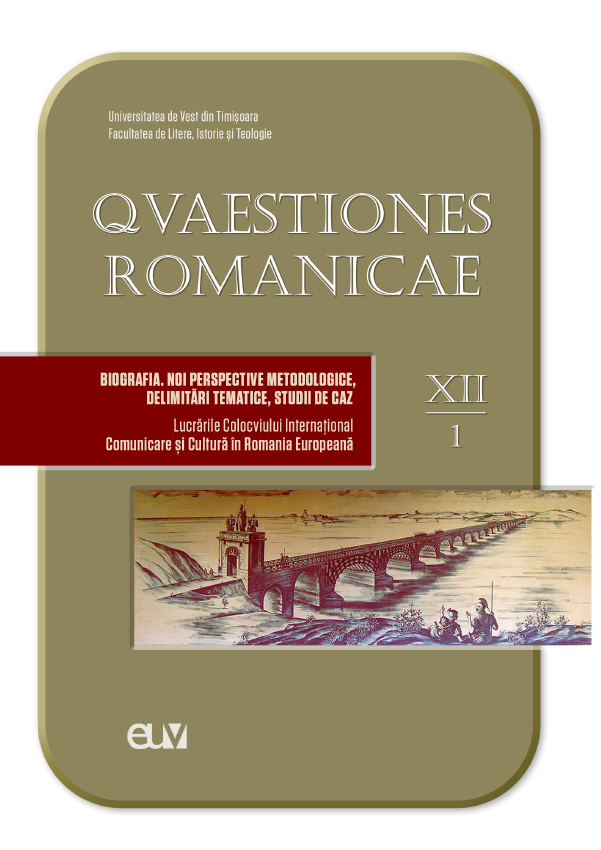La recentissima scoperta di una biografia fuori comune: Caterina, madre di Leonardo da Vinci
Abstract: (The Recent Discovery of an Unbelievable Biography: Caterina, Mother of Leonardo da Vinci) Professor Carlo Vecce, a well-known academic and scholar of Leonardo’s life, in his recent novel translated into Romanian Surâsul Caterinei, mama lui Leonardo da Vinci (Humanitas Fiction, 2024) made an exceptional personal discovery while rummaging through the Florentine archives of the fifteenth century: the notarial deed of liberation of Leonardo’s mother, who was a Circassian slave, originally from the Caucasus. The great genius of the Italian Renaissance is therefore only half Italian. With a technique similar to cinematic travelling, the author travels together with Caterina, the slave sold and resold several times, narrating not only about the characters who interfered in her life, but also about the geographical and multi-ethnic spaces between the Venetian port Tana on the Azov Sea and the Italian shores, describing in very truthful details the territories threatened by the Tartar hordes, the decadent Constantinople, the corrupt Venice, the flourishing Florence and the poor Tuscan countryside of the fifteenth century. Caterina eventually obtains her freedom, but how many Caterinas like her, who are the slaves of this century, succeed in getting free indeed? Vecce interprets the strange landscape detail in Leonardo's Annunciation as a codified allusion to the sacred mountain of the Circassians his mother would have told him about in his childhood. The novel is not so easy to translate due to its multilingual inserts and its specific realia that make the story so plausible, but it’s a fascinating and vivid fresco of a glorious epoch.
Keywords: Carlo Vecce, Romanian translation, Circassian, slave, Leonardo da Vinci.
Riassunto: Il professore Carlo Vecce, noto accademico e leonardista, nel suo recente romanzo tradotto in rumeno Surâsul Caterinei, mama lui Leonardo da Vinci (Humanitas Fiction, 2024) fece una eccezionale scoperta personale frugando negli archivi fiorentini del Quattrocento: l’atto notarile di liberazione di colei che diede alla luce Leonardo, che era una schiava circassa, originaria del Caucaso. Il grande genio del Rinascimento italiano quindi è italiano solo a metà. Con una tecnica simile al travelling cinematografico, l’autore percorre insieme a Caterina, la schiava venduta e rivenduta più volte, non solo i personaggi che incrociano la vita della schiava, ma anche gli spazi geografici e multietnici compresi fra il porto veneziano Tana sul Mare Azov e le sponde italiane, descrivendo in dettagli molto veridici il mondo minacciato dalle orde dei tartari, la decadente Costantinopoli, la corrotta Venezia e la florida Firenze e il povero contado toscano del Quattrocento. Caterina ottiene fino alla fine la sua libertà, ma quante Caterine schiave nei nostri giorni ci riescono in fin dei conti? Vecce interpreta lo strano dettaglio paesaggistico nella Annunciazione giovanile di Leonardo come un’allusione codificata alla montagna sacra dei Circassi di cui sua madre gli avrà raccontato nella sua infanzia. Un testo non troppo facile da tradurre per le sfide del suo multilinguismo e la varietà di culturemi e realia specifici che rendono il ricco racconto talmente verosimile.
Parole-chiave: Carlo Vecce, traduzione rumena, circasso, schiava, Leonardo da Vinci.
